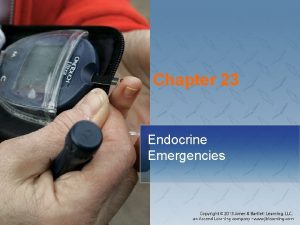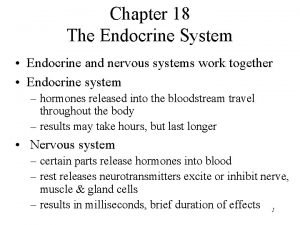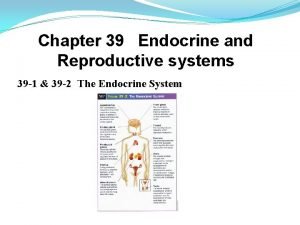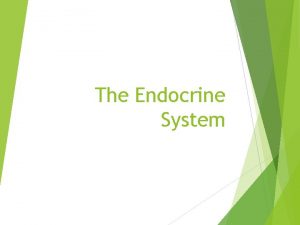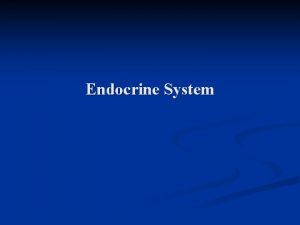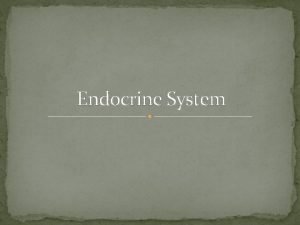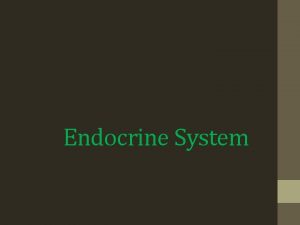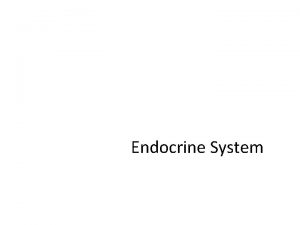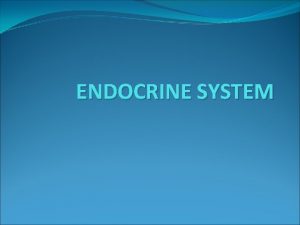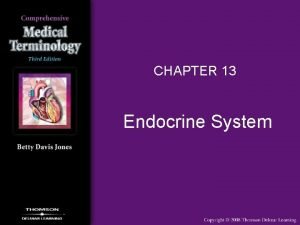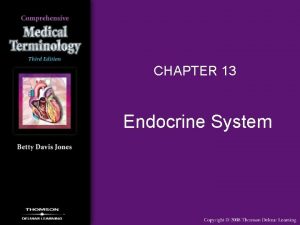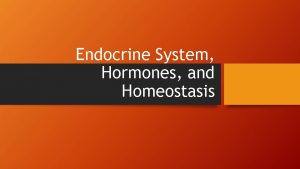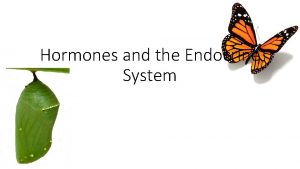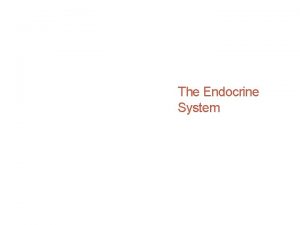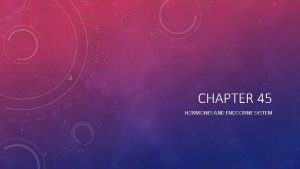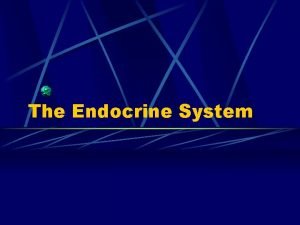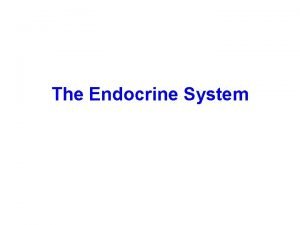Chapter 45 Hormones and the Endocrine System Hormones



















- Slides: 19

Chapter 45 - Hormones and the Endocrine System

Hormones • Chemical signals that are released into the extracellular fluid and carried by the circulatory system in order to regulate functions of the body. • Will stimulate slower, but longer lasting responses to stimuli than the nervous system will (ie: hormones will not remove your hand from the burning stove…) – Local regulators- Act only on local cells for a quicker response.

Hydrophilic based hormones (proteins) CANNOT pass directly into cell and MUST bind to receptors OUTSIDE cell. This creates a cascading signal transduction pathway of chemical chain reaction to cause a cellular response. Hydrophobic based hormones (steroids) CAN pass directly through cell membrane & bind to receptors INSIDE cell nucleus. This can affect DNA transcription and protein synthesis which alter cellular response.

Glands • Hypothalamus and Pituitary Glands- Control most of the rest of the endocrine system. o Hypothalamus- Integrates the endocrine and nervous system together o Pituitary- Attached to the bottom of the hypothalamus and produces/releases many important hormones (ie: growth hormones)


Glands o Thyroid Gland- Releases T 3 and T 4 which are important in human development, maturation, and homeostasis. - Iodine needed for proper functioning


Glands o Parathyroid Gland- Maintains levels of blood calcium

Negative Feedback system

Glands • Pancreas with associated Islets of Langerhans - Produces glucagon and insulin (antagonists) *meaning one increase blood glucose and the other one works to do the to maintain glucose levels in the blood opposite)

Click “play” button below to watch animation!


Diabetes Mellitus - Type 1 - Cannot produce insulin at all; need to give artificial insulin - Type 2 - Deficiency in the production of insulin; insulin or receptors ineffective

Glands - Adrenal Glands- Production of Epinephrine (adrenaline) and Norepinephrin (nonadrenaline) * “epi-” sit on top of kidneys - Rapid bioenergetic boost

Bozeman. Fight or Flight Response

Glands - Gonadal Glands- Sex hormones (all humans have all of these hormones, just in different concentrations) Ovaries = fmales Ovaries = females Testes = males

Glands - Androgens- Testosterone- High concentration in males - Estrogens- Maintains female reproductive system – Progesterone- Prepares the uterus for an embryo

Glands - Pineal Gland- Produces melatonin which maintains our biological clocks.

Know the glands AND their functions!
 Chapter 45 hormones and the endocrine system
Chapter 45 hormones and the endocrine system Hormones
Hormones Endocrine system and reproductive system
Endocrine system and reproductive system Endocrine system and nervous system
Endocrine system and nervous system Endocrine system and nervous system
Endocrine system and nervous system Lympathic
Lympathic Mechanism of hormone action
Mechanism of hormone action Endocrine system organs
Endocrine system organs 7:13 endocrine system
7:13 endocrine system Hypothal
Hypothal Chapter 23 the endocrine system
Chapter 23 the endocrine system Chapter 16 lesson 1 the endocrine system
Chapter 16 lesson 1 the endocrine system Chapter 18: the endocrine system answer key
Chapter 18: the endocrine system answer key The body's speedy electrochemical communication network
The body's speedy electrochemical communication network Comparison of endocrine and nervous system
Comparison of endocrine and nervous system Endocrine and nervous system comparison
Endocrine and nervous system comparison Chapter 46 digestive and endocrine disorders
Chapter 46 digestive and endocrine disorders Section 39-4 fertilization and development
Section 39-4 fertilization and development Chapter 29 endocrine and metabolic disorders
Chapter 29 endocrine and metabolic disorders Endocrine and hematologic emergencies
Endocrine and hematologic emergencies










